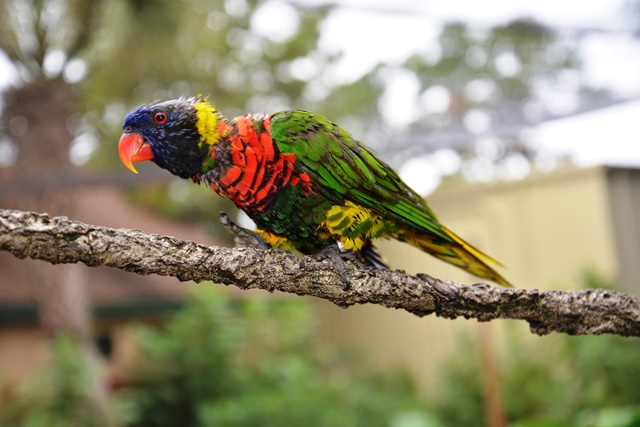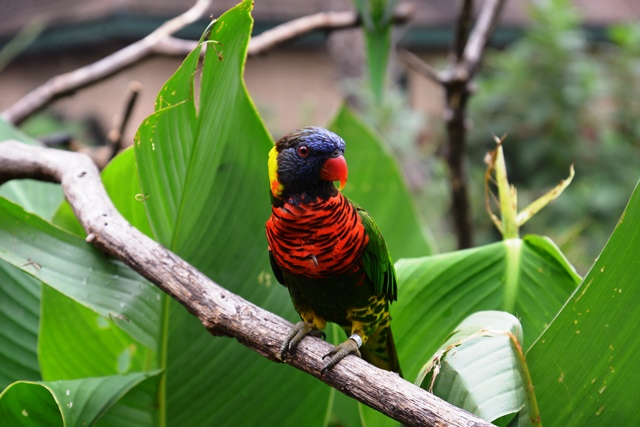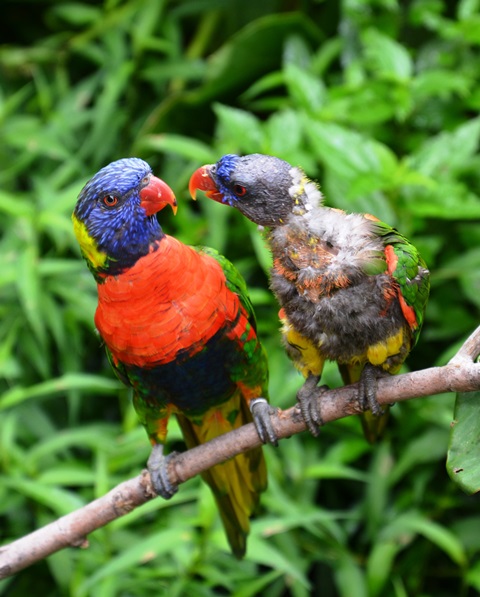Lorikeet
I do not do well with the notion of caged animals – any animal – be it man, a dog, or any beautiful creature that belongs in the wild. I think one of the reasons I enjoy feeding the wildlife, in my yard, is because they are free to roam, following their own whims, living their life as I want to live mine, on my terms.
However, regardless of how controversial zoos’ have become, we must acknowledge the incredibly important job they have done in protecting wildlife, endangered by greed and recklessness.
While I do not usually visit zoos on my own, I happened to stop at the Riverbanks Zoo and Garden, in South Carolina, with a desire to see their gardens, but soon found myself joyfully exploring the zoo.
I loved the various sculptures of the animals, as well as their attempt to create large, natural spaces for the animals living at this zoo – including a wonderfully playful aviary which houses incredibly friendly Lorikeets that one may interact with, including offering them food.
Natural Camouflage
It Always About Color
Such Beauty and Joy
From the Riverbanks Zoo Website:
“The Lorikeets form a unique group of generally very colorful parrots with several distinctive characteristics. The principal difference from other groups of Parrots is their adaptation to a pollen, nectar and fruit diet. Lorikeets aren’t designed to grind seeds; they don’t have the necessary equipment, such as a strong, muscle-lined gizzard. Rather, they are possessed of a very agile, brush-like tongue for collecting nectar and pollen. They also consume a small proportion of insects, fruit and berries. Such adaptations, together with special digestive enzymes, allow them to effectively utilize their special diet. Lorikeets are notorious for the volume and liquid nature of their droppings.
Range
Regions of Australia, Indonesia, Papua New Guinea, Solomon Islands, New Zealand, New Caledonia Rainforest, open forest (highland and lowland), woodlands, heath, mangroves, gardens, parks, and orchards depending on species.
Status in the Wild
Several species of lory and lorikeet are endangered, threatened or vulnerable to extinction. The main threats are habitat loss, introduced predators (rats and cats) and collecting for the pet trade.”
Do look forward to seeing the gardens and a few of the other creatures housed at the Riverbanks, in future posts.

















1 comment for “In the Wild!”